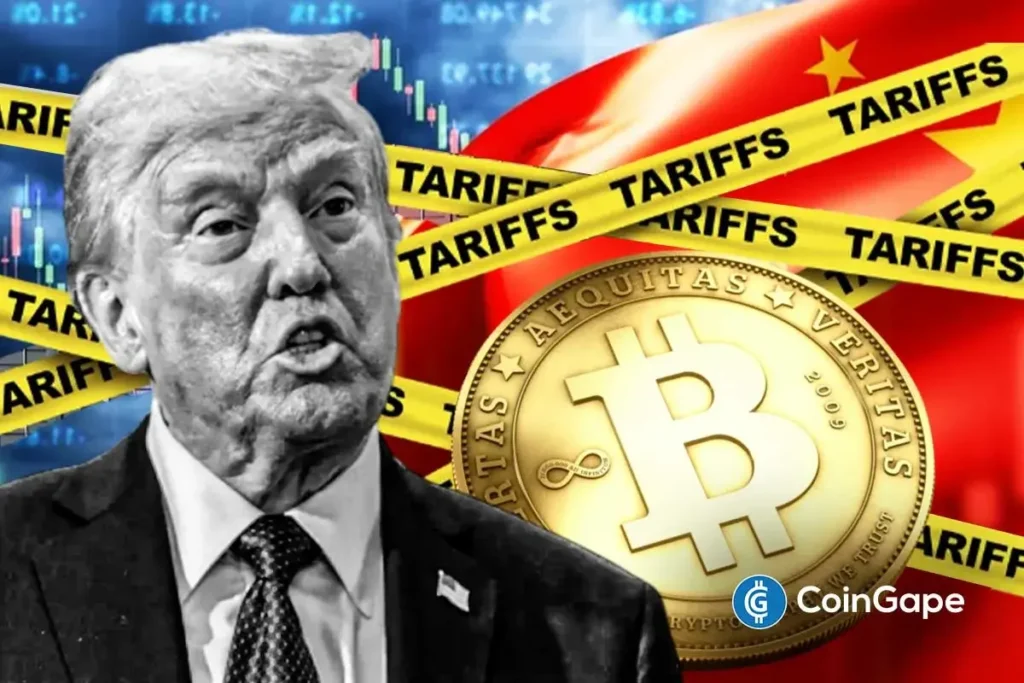Trump’s Trade Tariffs: Implications for U.S.-China Relations and the Crypto Market
In recent developments, U.S. President Donald Trump has reiterated his stance on imposing higher tariffs on China if a trade deal is not reached by November 1. This announcement comes amid growing concerns over the impact of these tariffs on the cryptocurrency market, particularly Bitcoin, which recently dipped to $104,000. The situation highlights the intricate relationship between international trade policies and the evolving landscape of digital currencies.
Proposed Tariff Increase to 155%
During a bilateral lunch with the Prime Minister of Australia, President Trump indicated that tariffs on China could potentially escalate to a staggering 155% if no agreement is achieved by the specified deadline. While this represents a significant increase from the previously announced 100% tariffs, Trump expressed optimism about the likelihood of reaching a fair deal with China’s President Xi Jinping. The two leaders are set to meet during a summit in Asia on October 31, just before the new tariffs would take effect. This key interaction could potentially pave the way for negotiations to avert further escalation.
Relations Between U.S. and China
Although Trump acknowledged that China has been "respectful" in its engagements with the U.S., he simultaneously issued stern warnings regarding alternative actions he may take if negotiations falter. This includes threats to impose restrictions on Chinese imports such as airplanes. Importantly, the president’s assertive rhetoric is accompanied by a nuanced diplomatic approach, as he seems hopeful about the possibility of resolving the current tensions through constructive dialogue with Xi Jinping.
Impact on Cryptocurrency Markets
The ongoing trade tensions are not just geopolitical issues but are also having tangible effects on financial markets. Bitcoin, a leading cryptocurrency, has displayed volatility in response to Trump’s tariff threats. After experiencing a slight rebound to $111,500, Bitcoin’s price plummeted back to around $110,000, underscoring how sensitive digital currencies can be to external economic pressures. Last week, Bitcoin’s value dropped as low as $104,000, indicating that investor sentiment is closely tied to developments in U.S.-China relations.
Broader Tariffs and International Relations
The implications of Trump’s tariffs extend beyond China. The U.S. president has maintained substantial tariffs on countries like India, tying these economic sanctions to international behavior. Trump has stated that these tariffs will remain in place until India halts its purchase of Russian oil. This suggests that U.S. trade policy is increasingly intertwined with geopolitical strategies, further complicating the landscape of international relations and economic interactions among nations.
Looking Ahead: The Future of Trade and Cryptocurrencies
As the October 31 deadline approaches, global markets, including the crypto sector, will be closely monitoring any new developments in U.S.-China trade negotiations. The potential for higher tariffs could create turmoil not just in traditional equity markets but also in the evolving cryptocurrency space. Investors are urged to stay vigilant and consider the broader implications of trade policies on market dynamics and investment opportunities.
Conclusion
In summary, the looming threat of increased tariffs from President Trump poses significant implications for U.S.-China relations and the broader financial landscape. As tensions rise, both political leaders and investors face critical decisions that could reshape trade agreements and market conditions. With Bitcoin and other cryptocurrencies reflecting these changes, understanding the interplay between geopolitical issues and financial markets will be essential for navigating the uncertain future ahead.
















